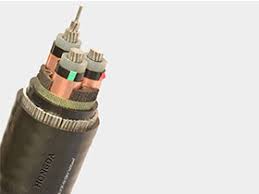1. Ointment. The ointment mainly includes fiber paste and aerial bundled cable(abc) 7870. Under normal circumstances, the fiber paste should fill the entire loose tube, and the cable paste should fill every gap of the optical cable core under pressure. Nowadays, there are ways to fill the fiber paste half full or less. For the cable paste, some just apply a layer on the outside of the cable core, and some are not filled between the two ends of the optical cable. This will make the optical fiber not well protected, affect the transmission performance such as optical fiber attenuation, and the poor waterproof performance can not reach the national standard. Once the optical cable accidentally sees water, the entire link will seep and be scrapped. Under normal circumstances, even if there is an accidental seepage, you only need to repair the part of the seepage. (The national standard requires water blocking performance: three meters of fiber optic cable, one meter of water column pressure, no water seepage for 24 hours.) If you use poor ointment, the above problems will also occur, and it may be due to poor thixotropy of the ointment , The optical fiber will cause microbending loss, and the transmission characteristics of the entire link will be unqualified; if the grease is acidic, it will react with the metal material in the optical aerial bundled cable SANS 1418 to precipitate hydrogen molecules, and the attenuation of the optical fiber will increase rapidly when it encounters H, causing the entire The link is interrupted for transmission.
2. Sheath. The fiber optic cable sheath must not only adapt to many different and complex climate environments, but also ensure long-term (at least 25 years) stability. The optical cable sheath must not only have a certain strength, low thermal deformation, abrasion, water permeability, thermal shrinkage and friction coefficient, but also strong resistance to environmental stress and good material processing performance. Although the sheath material that is rarely used or poorly used can pass the factory acceptance, cracking and water seepage will occur after a period of use due to quality defects. It will be more serious if recycled plastic is used to replace the high-quality polyethylene sheath material. The fiber optic cable made of high-quality sheathing material has a smooth, bright, uniform thickness and no bubbles after the cable is formed. Otherwise, the fiber optic cable skin will be rough, and because there are many impurities in the raw material, you can find that the fiber optic cable skin is very small. Wow, and because of its thin thickness, the overall outer diameter of the optical cable will be much smaller than that of a high-quality optical cable. Indoor optical cables are generally made of high-quality flame-retardant polyvinyl chloride. They should have a smooth, bright appearance, good flexibility, and easy peeling; otherwise, they will have poor skin finish and easily adhere to tight-fitting fibers and aramid.
3. Steel belt and aluminum belt. The steel strips and aluminum strips in the optical cable are mainly used to protect the optical fiber from mechanical side pressure, moisture resistance, etc., and better optical cables generally use chrome-plated steel strips. Inferior fiber optic cables use ordinary iron sheet or black sheet (uncoated steel strip) with rust-proof treatment on only one side instead of chrome-plated steel strip. It is easy to separate from the sheath to form a comprehensive bonding layer, and the moisture barrier performance is also very poor; some use tin-plated steel strips instead of chrome-plated steel strips. The surface of the tin-plated steel strips, bubbles, etc. are inevitable. Therefore, it is prone to corrosion under humid atmosphere and surface condensation or water immersion conditions, especially under acidic conditions. The tin-plated layer has poor heat resistance, and the melting point is only 232 degrees Celsius. In the application, due to the high temperature when the sheath is extruded, the peel strength is uncertain, which affects the moisture resistance of the optical aerial bundled cable(abc) SANS 1418 standard. The melting point of chromium is 1900 degrees Celsius, and its chemical properties are very stable. It will not rust when placed in the air or immersed in water at room temperature. It has very good corrosion resistance. Because the surface is easily oxidized to form a passivation layer, it has good environmental resistance. For aluminum tapes, unqualified hot-sticking film-coated aluminum tapes are generally used instead of casting-coated aluminum tapes, which will also affect the performance of the optical cable.
